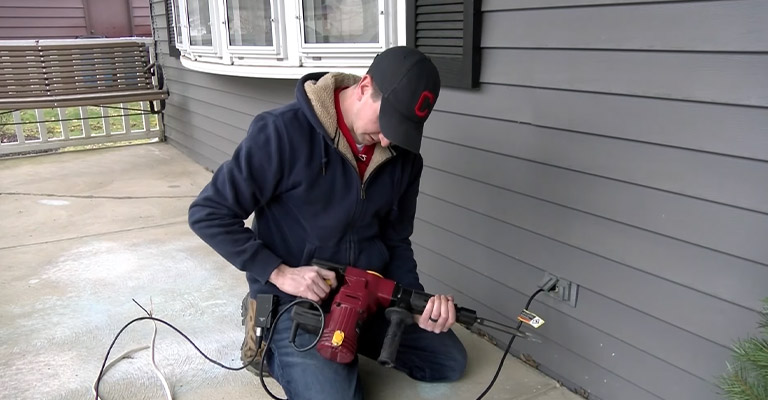How to Move Heavy Furniture: A Comprehensive Guide

Moving can be a daunting task, especially when it comes to shifting bulky furniture. Whether you’re relocating to a new home or simply rearranging your living space, moving heavy items requires caution and proper techniques to ensure safety and avoid damage.
With the right knowledge and tools, you can make the process smoother and more efficient. Let’s dive into a step-by-step guide on how to move heavy furniture with ease.
Ten Easy Steps to Follow in Moving Heaving Furniture
1. Prepare in Advance
Before attempting to move any piece of furniture, it’s essential to plan. This preparation will help avoid any last-minute hurdles.
Declutter
If you’re relocating, declutter and decide what furniture you really need in your new home. This reduces the overall load.
Measure Up
Ensure the furniture can fit through doorways, hallways, and staircases. Knowing dimensions ahead of time can prevent potential complications.
Dismantle if Possible
Remove any detachable parts like cushions, drawers, or legs. This makes the furniture lighter and more manageable.
2. Equip Yourself with the Right Tools
Using appropriate tools can significantly reduce the strain on your body and make the moving process more streamlined.
Furniture Sliders
These are indispensable for hardwood or carpeted floors. They reduce friction, allowing you to slide heavy items without much effort.
Furniture Dolly
This is a wheeled platform that makes it easier to move heavy objects. Just ensure the dolly can support the weight of the furniture.
Lifting Straps
These harnesses can redistribute the weight of the furniture, making it easier to lift and carry. They also free your hands, allowing you to navigate obstacles better.
3. Use Proper Lifting Techniques
The way you lift and carry heavy items can have a direct impact on your well-being. Avoid back injuries by following these methods:
Bend at the Knees
Always bend your knees, not your waist. This ensures the strong muscles in your legs are doing the lifting, not your vulnerable back.
Keep Furniture Close
When lifting, hold the item close to your body. This offers better control and reduces strain.
Avoid Twisting
Turn by pivoting your feet rather than twisting your back. If you need to change direction, move your feet first.
4. Enlist Help
While it’s possible to move some items solo, it’s always better to have an extra set of hands or even a team, depending on the furniture’s size and weight.
Coordinate
Communication is vital. Decide on commands like “lift”, “lower”, and “stop” to ensure coordinated efforts.
Spread the Weight
If an item is particularly long, like a couch, ensure there’s even distribution of weight. Position one person at each end.
5. Protect the Furniture and Your Home
While moving, the risk of damaging your furniture or your home is high. Take precautions to avoid such mishaps.
Padding
Use padded blankets or bubble wrap to protect delicate furniture surfaces from dings and scratches.
Corner Guards
These can protect both your furniture and your walls from scratches and dents.
Secure Drawers and Doors
If you can’t remove them, secure them with plastic wrap or moving bands to prevent them from swinging open.
6. Consider Professional Help
If you’re unsure or uncomfortable moving heavy furniture on your own, don’t hesitate to hire professionals. They have the experience, tools, and know-how to ensure your furniture gets from point A to B safely.
Remove Obstacles
Clear away rugs, small furniture, toys, or any other items that can be a tripping hazard.
Plan Your Route
Before lifting, know where you’re going. Determine if you’re taking the furniture through the front door, garage, or another exit.
Open Doors
Prop open any doors along your path. If you’re moving during wet weather, put down cardboard or plastic sheeting to protect both the furniture and your floors.
8. Take Your Time
One of the most overlooked tips is to simply take your time. Rushing can result in damage or injury.
Take Breaks
If you feel tired or strained, set the furniture down and take a break. It’s better to rest than risk an injury.
Reassess If Needed
If something isn’t working, like a piece of furniture not fitting through a door, set it down and re-evaluate your strategy.
9. Safety First
Always prioritize safety over everything else when moving heavy furniture.
Wear Proper Footwear
Ensure you wear closed shoes with a grip to prevent slipping.
Use Gloves
They can provide a better grip and prevent splinters or cuts.
Stay Hydrated
Moving is physically demanding. Drink water regularly, especially if you’re moving on a hot day.
10. Post-Move Care
Once you’ve successfully relocated the furniture, there are a few final steps to ensure everything is in order.
Inspect for Damage
Check for any dents, scratches, or damages that might have occurred during the move. This is especially crucial if you’re planning to claim insurance or return rented furniture.
Reassemble
If you had dismantled any furniture, now’s the time to put it back together. Keep all screws, bolts, and fittings labeled and organized to simplify this process.
Clean and Polish
Relocation can lead to dust accumulation or minor scuffs. A quick clean and polish can have your furniture looking as good as new.
Conclusion
Lifting heavy furniture, especially in tight spaces, demands not just physical strength but also smart strategies and the right tools. Whether navigating large or heavy furniture downstairs, trying to stand couches upright in tight corners, or simply moving furniture from one room to another, safety should be the forefront concern. Utilizing essentials such as moving blankets, furniture pads, and plastic container covers can make all the difference in protecting your precious pieces.
Moreover, tools like hand trucks and moving straps can significantly reduce the risk of injury, ensuring that you transport furniture with ease. While carrying furniture, especially large furniture, it’s vital to secure them with furniture blankets and firmly attach them to a hand truck with packing tape. If the task seems too daunting, professional movers are equipped with the expertise to navigate even the trickiest of situations, ensuring your heavy furniture safely reaches its destination. Remember, the goal isn’t just about moving; it’s about moving right.






